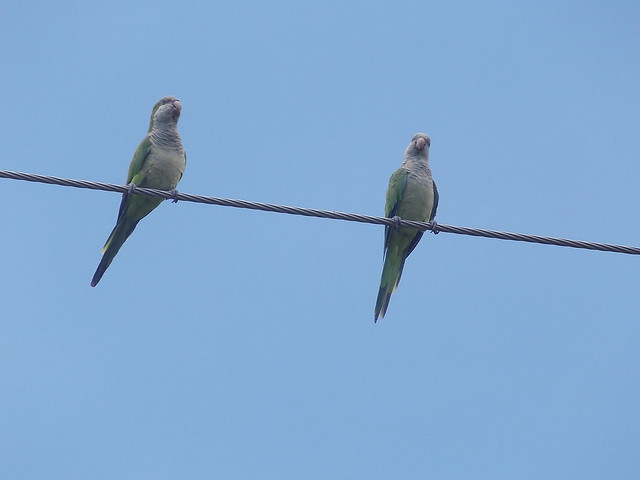Birders
Related: About this forumThe Parakeets of London
The Greater London area is home to thousands of parakeets. The population of feral ring-necked parakeets has grown from hundreds back in the 1980s to more than 30,000 according to the last count in 2012. The birds, native to Africa and India, are generalist feeders and seem to be well adapted to the urban settings and colder climate of southern England. The origins of the London parakeet population remain a bit mysterious, and a few popular theories exist—that Jimi Hendrix released a mating pair in the 1960s, for example, or that a flock escaped from a set during the filming of the Humphrey Bogart movie The African Queen, or possibly that a storm damaged several aviaries in the 1980s. The parakeet’s impact on local species is still not fully understood, and studies are ongoing.
HINTS: View this page full screen. Skip to the next and previous photo by typing j/k or ?/?.
https://www.theatlantic.com/photo/2021/04/photos-the-parakeets-of-london/618729/
Siwsan
(26,249 posts)I've been watching these feeders for years, and never seen anything but your everyday average Michigan birds. Lots of sparrows, nuthatches, cardinals, blue jays, etc. At first I thought it was a fluke, but I've seen it 3 out of the past 4 afternoons.
mopinko
(69,990 posts)guess we've messed w them so much, they cant survive like their ancestors.
here we have monk parakeets.
also purple finches. escaped from the pet trade. darling lil buggers. compete w the european sparrows, so...
secondwind
(16,903 posts)Karadeniz
(22,468 posts)csziggy
(34,131 posts)
https://www.audubon.org/field-guide/bird/nanday-parakeet
Monk parakeets are also very common in parts of Florida.

The USFWS made a brief attempt to eradicate the non-natives and was temporarily successful in removing colonies in California, but it soon became apparent that the effort was futile. Within a few years, Monk Parakeet colonies could be found in New York, Connecticut, Illinois, California, Texas, Louisiana, Oregon, New Jersey, and Alabama. The first nesting colonies were seen in Florida in 1969. Today, there are established populations in over 50 counties, including Tampa, St Petersburg, Jacksonville, Bradenton, Ft Lauderdale, Miami, and Boca Raton. Flocks of the bright green birds can often be seen flying overhead or covering lawns looking for seeds and bugs. The parrots keep in contact with each other through constant screeches and squawks, and flocks can usually be heard from quite a distance away. A number of individuals serve as sentinels, watching out for hawks or other dangers.
https://www.dailykos.com/stories/2016/12/31/1583700/-Florida-s-Invaders-The-Monk-Parakeet